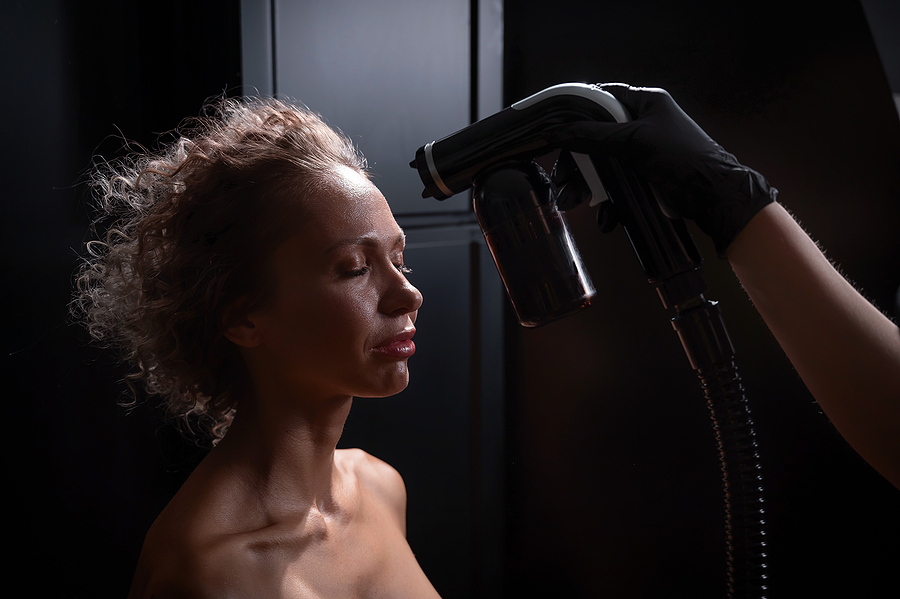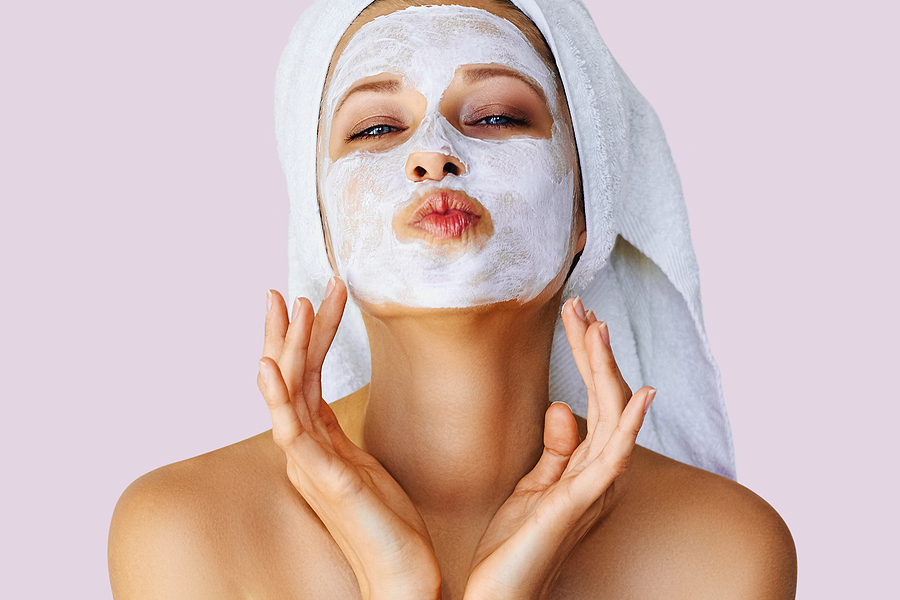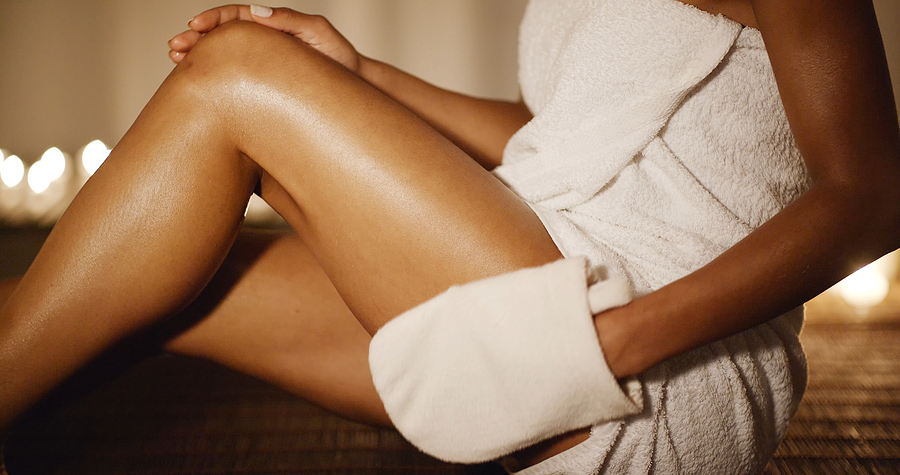The goal of a spray tan is a sun-kissed, natural glow. Sometimes, however, the result is less bronze goddess and more…orange. This common tanning mishap can be frustrating, especially when you have an event on the horizon. An uneven application might leave streaks on your legs, or you might notice dark patches on your elbows and knees.
A bad spray tan can happen for many reasons, from improper skin prep to the formula itself. Understanding why your tan turned orange is the first step to fixing it and preventing it from happening again. This guide will walk you through immediate fixes, gentle exfoliation methods, and effective home remedies to correct an orange spray tan and restore your skin’s natural tone.

What to Do Right After Noticing the Mistake
Acting quickly is key to fixing a bad spray tan. The sooner you address the issue, the easier it will be to correct the color. Most self-tanning products contain dihydroxyacetone (DHA), an active ingredient that darkens the skin. This process takes several hours to fully develop. If you notice an uneven tone or an orange hue within the first few hours, you have a better chance of correcting it.
If you spot a problem right away, one of the first things you can do is take a warm shower. Use a gentle, oil-free soap and lightly wash the affected areas. Avoid harsh scrubbing, as this can make patchiness worse. The goal is to rinse off any excess product before it has a chance to fully set. A steam room or sauna can also be effective, as the heat and moisture open up your pores and help the tan fade more evenly.
Gentle Exfoliation Methods
Exfoliation is one of the most effective ways to fix an orange spray tan. By removing the top layer of dead skin cells, you can lighten the unwanted color and reduce streaks. However, it’s important to be gentle to avoid irritating your skin.
Exfoliating Mitts and Scrubs
Using an exfoliating mitt is a great way to gently buff away excess tan. Wet the mitt and use it in circular motions on the affected areas. This method gives you control over the pressure, so you can be more gentle on sensitive skin.
You can also make your own scrub at home. A simple mixture of sugar and olive oil works well. The sugar acts as a natural exfoliant, while the olive oil moisturizes your skin. Another popular option is a paste made from baking soda and a small amount of water. Apply the paste to dark or orange patches, let it sit for a few minutes, and then gently scrub it off in the shower.
Tan Removers and Erasers
For a more targeted approach, consider using a product specifically designed for tan removal. Self-tan erasers are formulated to break down the DHA on your skin, making it easy to wash away the unwanted color. These products are often gentler than physical scrubs and can remove an entire layer of tan in minutes. Apply the eraser as directed, let it sit for the recommended time, and then rinse it off.
Home Remedies to Lighten Dark Areas
If you’re dealing with stubborn dark spots on areas like your knees, elbows, and ankles, a few common household items can help.
Lemon Juice
The citric acid in lemon juice is a natural lightening agent. Mix equal parts lemon juice and water, and apply it to the dark patches with a cotton ball. Let it sit for a few minutes before rinsing it off. Be cautious when using lemon juice, as it can make your skin more sensitive to the sun. It’s also best to avoid using it on your face.
Baking Soda Paste
As mentioned earlier, a paste of baking soda and water is an effective remedy. Its mild abrasive nature aids in exfoliating dead skin cells, which often contribute to hyperpigmentation. Apply it to the darkest areas, let it dry for about 10-15 minutes, and then gently rinse it off.
Whitening Toothpaste
This may sound unusual, but the whitening agents in some toothpastes can help lighten small, stubborn spots. Apply a small amount to the dark area, let it sit for a few minutes, and rinse thoroughly.
Learn About Our Automated Spray Tanning Beds! ✨
Tips for Your Next Spray Tan
Prevention is always the best strategy. To avoid another orange spray tan in the future, follow these tips for a flawless application:
- Exfoliate First: Exfoliate your entire body 24 hours before your spray tan. This creates a smooth canvas for an even application.
- Moisturize Dry Areas: Before tanning, apply a light layer of moisturizer to dry areas like your elbows, knees, ankles, and hands. This prevents these spots from absorbing too much product.
- Use a Barrier Cream: For extra protection on your hands and feet, use a barrier cream. This will stop them from turning orange.
- Opt for Gradual Tan: If you’re new to self-tanning, consider using a gradual tanning lotion. It allows you to build color slowly, giving you more control over the final result.
- Choose a Professional: When in doubt, go to a reputable tanning salon. A professional technician can help you choose the right shade for your skin tone and ensure an even application.
Frequently Asked Questions
How can I prevent dark spots on my knees and elbows?
Moisturizing is key. Before applying a spray tan, apply a light, oil-free lotion to your knees, elbows, ankles, and any other dry areas. This creates a barrier that prevents these spots from absorbing too much tanning solution.
Will exfoliating remove my entire spray tan?
Gentle exfoliation will lighten your tan and help remove streaks, but it’s unlikely to remove it completely in one go. If you want to remove the tan entirely, you may need to exfoliate several times over a few days or use a dedicated tan removal product.
Can I use lemon juice on my face to lighten the tan?
It is not recommended to use lemon juice on your face. The skin on your face is more sensitive, and the high acidity of lemon juice can cause irritation and increase sun sensitivity. Stick to gentle facial exfoliants or a vitamin C serum instead.
How long does it take for a bad spray tan to fade?
A spray tan typically fades over 5-7 days as your skin naturally exfoliates. If you’re actively trying to remove it, you can speed up this process significantly. With exfoliation and other removal methods, you can often correct or remove a bad tan within 1-3 days.
What are the best exfoliating products for sensitive skin?
For sensitive skin, choose a gentle physical exfoliant like a soft exfoliating mitt or a fine-grain scrub. A chemical exfoliant containing lactic acid can also be a good option, as it is one of the milder alpha-hydroxy acids (AHAs). Always do a patch test before trying a new product.
In Summary
A bad spray tan can feel like a disaster, but it’s almost always fixable. With quick action, gentle exfoliation, and a few simple home remedies, you can correct an orange hue and even out streaks. And by properly preparing your skin for your next session, you can ensure a beautiful, natural-looking glow every time.
For more advice on achieving the perfect sunless tan, check out our other blog posts on tanning and skincare.
Related Post: 9 Things That Can Fix an Orange Tan









